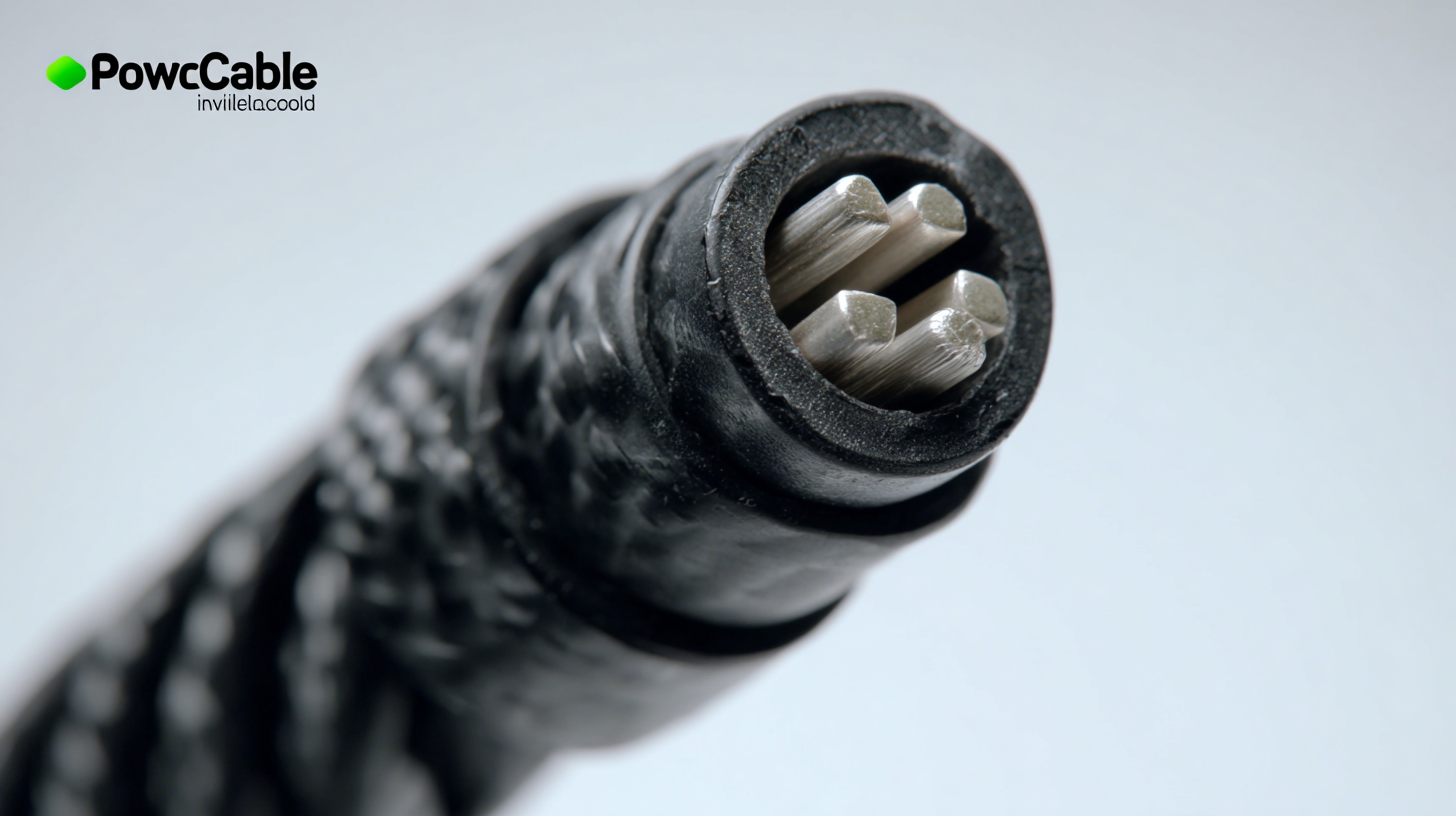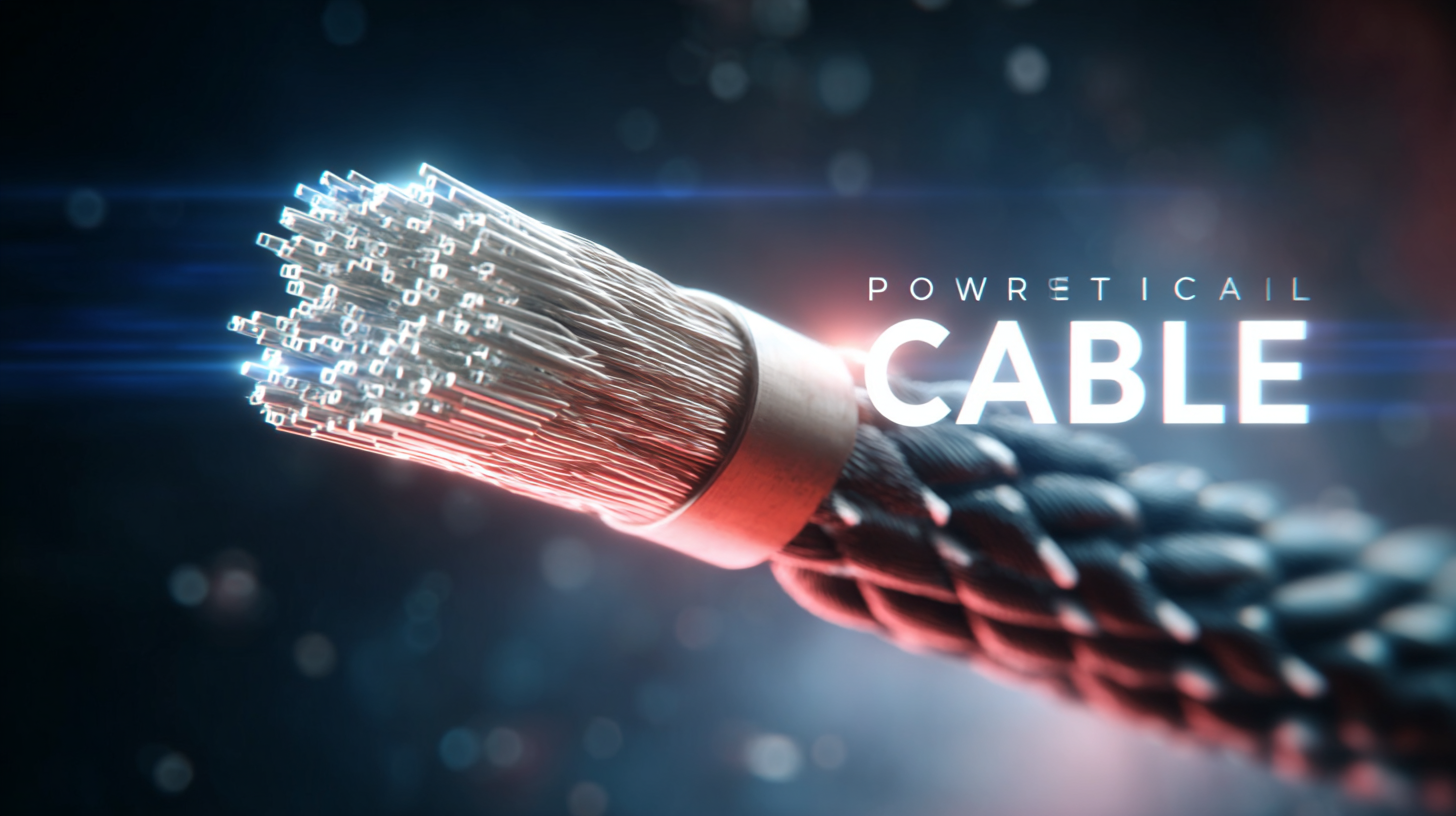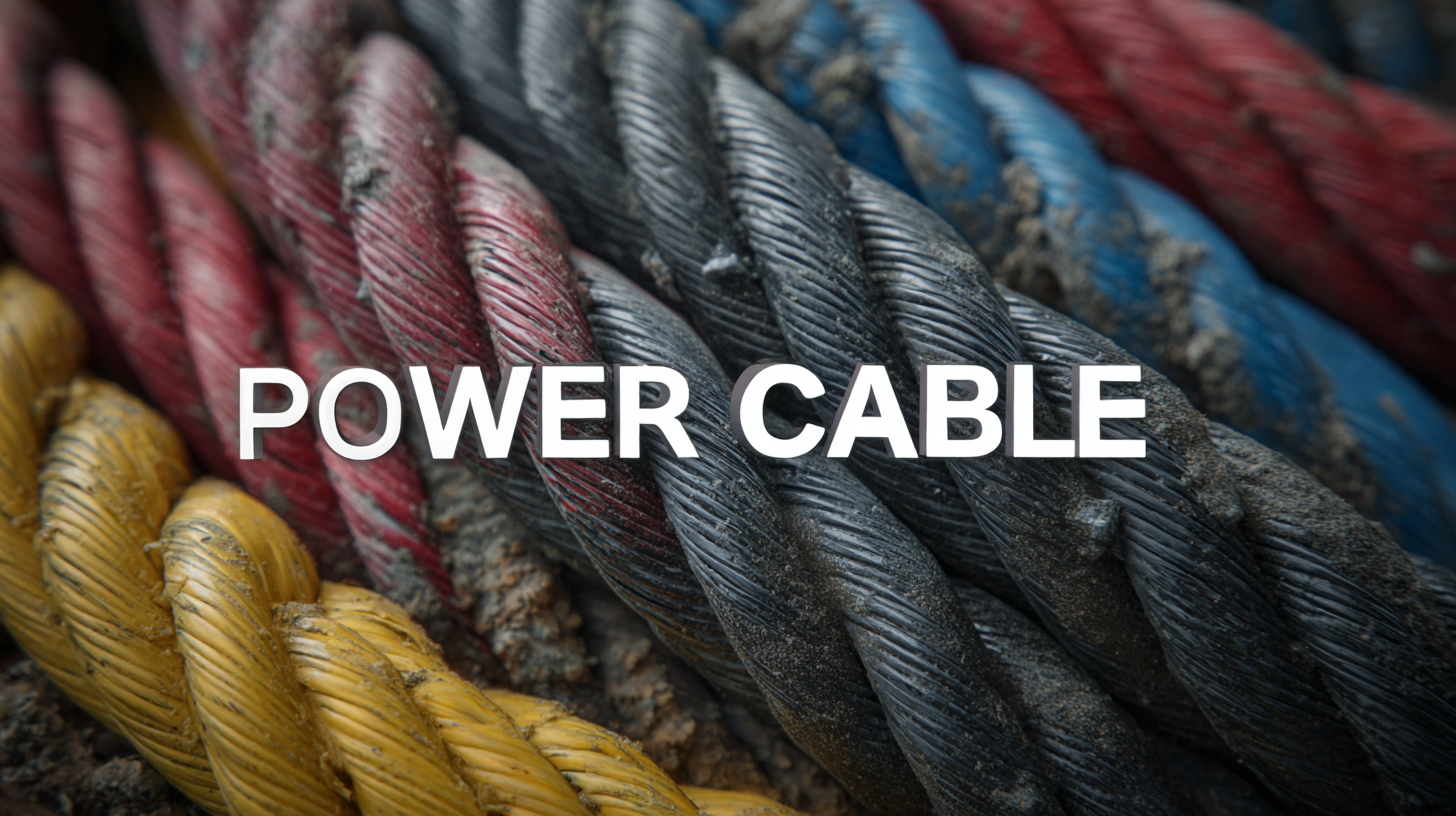Exploring Innovative Alternatives to Best Power Cable Electrical for Sustainable Solutions
In an era where sustainability is paramount, the quest for innovative alternatives to traditional Power Cable Electrical systems is gaining momentum. According to a recent report by the International Energy Agency, the global demand for electricity is projected to increase by 30% by 2040, intensifying the need for more efficient and environmentally friendly solutions. The challenges surrounding the maintenance and after-sales service of power cables have also come to the forefront, as businesses seek to minimize repair costs while enhancing reliability. A study from the Electrical Contractors Association highlighted that up to 20% of the lifecycle costs of electrical systems are attributed to maintenance and service, underscoring the importance of implementing sustainable practices.

This blog will explore various innovative alternatives to conventional power cables that not only address reliability and cost-effectiveness but also pave the way for a greener future in electrical infrastructure.
Innovative Materials in Power Cable Manufacturing for Sustainability
The evolution of power cable manufacturing is witnessing a transformative shift towards sustainability, driven by innovative materials that minimize environmental impact. According to the Global Cable and Wire Market Report 2022, the demand for eco-friendly cables is projected to increase by over 15% annually, highlighting the growing recognition of sustainable practices among manufacturers and consumers alike. Biodegradable polymers, such as polylactic acid (PLA) and plant-based polyethylene, are gaining traction, offering an alternative that reduces reliance on conventional petroleum-based materials while maintaining performance.

Moreover, advances in cable insulation materials, such as cross-linked polyethylene (XLPE) and ethylene propylene rubber (EPR), are enhancing the efficiency and lifespan of power cables. The International Electrotechnical Commission (IEC) reported that XLPE cables not only have a lower carbon footprint but also improve energy efficiency by reducing heat loss during transmission.
Incorporating recycled content into cable designs further contributes to a circular economy, with estimates suggesting that up to 30% of materials in some power cable products can now be derived from recycled sources. These innovations not only fulfill regulatory requirements but also position manufacturers as leaders in delivering environmentally sustainable solutions to meet the energy demands of the future.
Comparative Analysis of Eco-Friendly Power Cable Alternatives
The quest for eco-friendly power cable alternatives has gained momentum as industries strive to reduce their environmental footprint. A comparative analysis reveals that traditional PVC-based cables can account for up to 30% of the carbon emissions during their lifecycle. According to a recent report by the International Energy Agency (IEA), switching to cross-linked polyethylene (XLPE) cables can reduce energy losses by approximately 15%, making them a superior choice for sustainable energy systems. XLPE not only boasts a lower environmental impact but also demonstrates enhanced thermal resistance, contributing to longer service life and reduced maintenance costs.

Moreover, the burgeoning innovations in biodegradable cables made from natural polymers present another promising alternative. Research published in the Journal of Sustainable Materials indicates that these cables can decompose within three to five years when disposed of properly, as opposed to their conventional counterparts that can linger in landfills for decades. As more manufacturers invest in sustainable materials, the transition towards these eco-friendly options could significantly diminish the electrical industry’s carbon footprint. The ongoing comparative analysis underscores the necessity for the adoption of such alternatives, aligning with global sustainability goals and the urgent need to address climate change.
Impact of Sustainable Power Cables on Energy Efficiency
Sustainable power cables play a crucial role in enhancing energy efficiency across various sectors. As energy demands continue to rise, the shift towards more eco-friendly options in electrical infrastructure has become imperative. Innovative materials, such as bio-based polymers and recyclable metals, not only minimize environmental impact but also improve the overall performance of power transmission. These advancements help in reducing energy loss due to heat and resistance, leading to a more efficient electrical system.
The integration of sustainable power cable technologies fosters a circular economy, where materials can be reused and recycled rather than ending up in landfills. This not only conserves resources but also aligns with global efforts to combat climate change. Moreover, implementing these sustainable solutions can lead to significant cost savings in the long run, as they typically offer increased durability and lower maintenance needs. By prioritizing the adoption of sustainable power cables, we can create a more efficient and environmentally friendly energy framework that benefits both consumers and the planet.
Impact of Sustainable Power Cables on Energy Efficiency
This chart illustrates the energy efficiency gains achieved through the use of innovative sustainable power cables compared to conventional options across different scenarios.
Future Trends in Sustainable Power Cable Technology
As the demand for sustainable energy solutions continues to grow, the future of power cable technology is evolving rapidly. According to a recent report by MarketsandMarkets, the global power cable market is expected to reach USD 275.73 billion by 2026, driven by increased investments in renewable energy and smart grid technologies. Innovations such as environmentally friendly insulation materials and enhanced cable design are paving the way for a greener electrical infrastructure. For example, cross-linked polyethylene (XLPE) cables are gaining popularity due to their lower environmental impact and improved performance under high temperatures.
Tip: When selecting power cables for your projects, consider those manufactured with sustainable materials and energy-efficient technologies to ensure a minimal ecological footprint.
Additionally, the rise of smart technology is influencing the design and functionality of power cables. A report by Grand View Research highlights that the integration of Internet of Things (IoT) capabilities into power cables can optimize energy consumption and enhance performance monitoring. This trend indicates a shift toward smarter and more efficient power distribution systems, essential for supporting the increasing electrification of various sectors.
Tip: Keep an eye on emerging technologies within the power cable industry, as they can significantly impact long-term cost savings and operational efficiency.
Exploring Innovative Alternatives to Best Power Cable Electrical for Sustainable Solutions - Future Trends in Sustainable Power Cable Technology
| Material | Sustainability Rating | Heat Resistance (°C) | Electrical Conductivity (S/m) | Cost ($/meter) |
|---|---|---|---|---|
| Aluminum | Good | 80 | 35.5 | 1.50 |
| Copper | Excellent | 100 | 58.0 | 3.00 |
| Recycled Copper | Excellent | 95 | 58.0 | 2.75 |
| Biodegradable Plastics | Good | 70 | 10.0 | 1.20 |
| Graphene | Excellent | 200 | 60.0 | 5.00 |
Best Practices for Implementing Eco-Conscious Electrical Solutions
In today's rapidly evolving energy landscape, adopting eco-conscious electrical solutions has become imperative for fostering sustainability. One of the best practices for implementing these solutions is to prioritize the use of renewable energy sources, such as solar and wind power. Not only do these energy alternatives significantly reduce carbon emissions, but they also promote energy independence.
Incorporating solar panels into residential and commercial infrastructures can provide a reliable and clean power supply while decreasing reliance on traditional power cables, which often contribute to unnecessary waste and environmental degradation.
Another essential practice is choosing energy-efficient electrical components. Selecting power cables with improved insulation and lower resistive losses can drastically enhance overall system efficiency. Additionally, utilizing smart technology to monitor energy usage allows consumers to make informed decisions about their power consumption.
This approach not only helps in reducing energy costs but also encourages a culture of sustainability within communities. By combining innovative alternatives and energy-efficient technologies, we can pave the way for a more sustainable future in electrical solutions.
